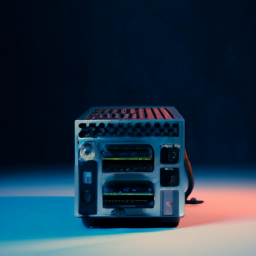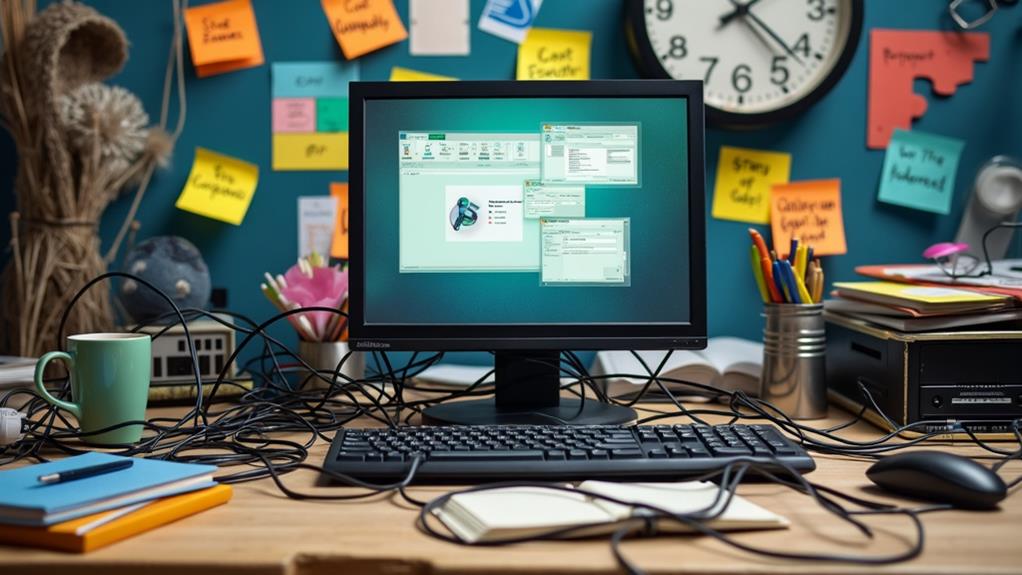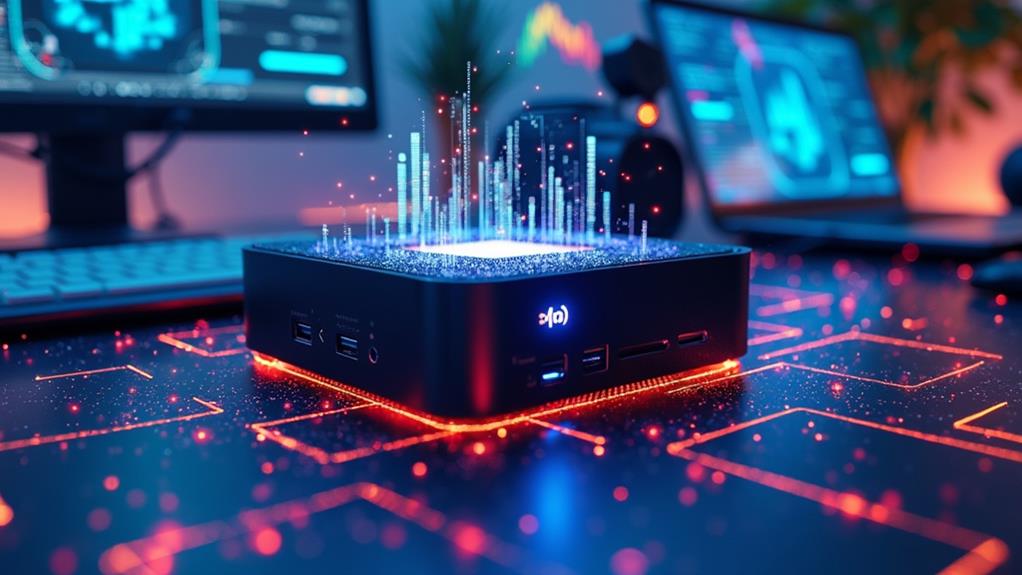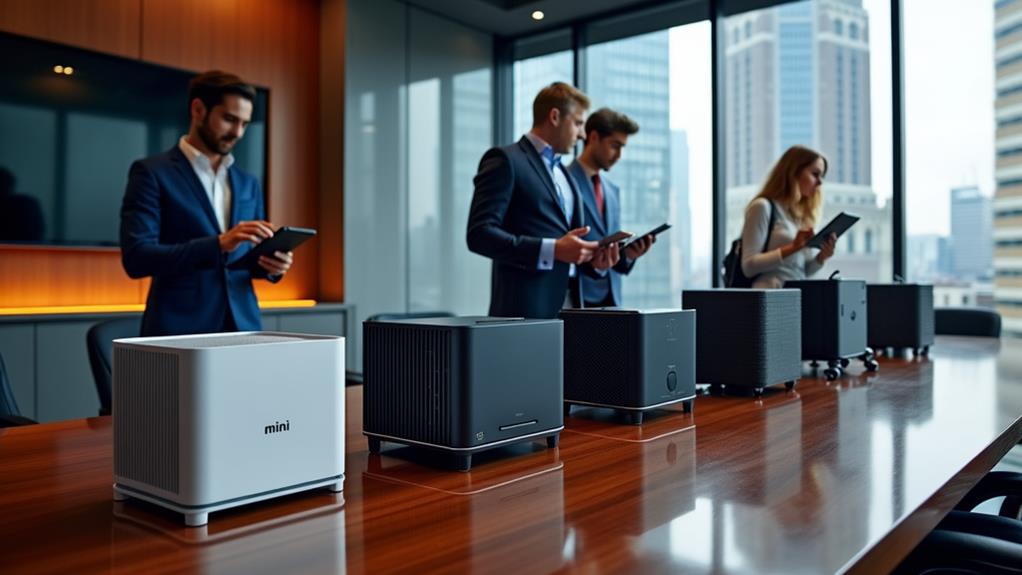



Are you considering investing in a mini PC but unsure about its specifications? One crucial factor to consider is the amount of RAM and storage it offers. The RAM and storage capacity in mini PCs vary depending on the model and brand. While some mini PCs may offer a modest amount of RAM and storage, others can provide impressive capabilities that rival their larger counterparts. In this article, we will explore the range of RAM and storage options available in mini PCs, helping you make an informed decision before making your purchase.
Understanding RAM and Storage
Defining what RAM is
RAM, which stands for Random Access Memory, is a type of computer memory that provides the temporary storage space that your computer needs to access data quickly. It plays a crucial role in a computer’s performance, as it allows the CPU to access information without having to wait for the slower storage devices. RAM is volatile memory, which means that it only stores data as long as the computer is powered on.
Defining what Storage is
Storage, on the other hand, refers to the long-term memory capacity of a computer. It is where all the data, files, programs, and the operating system are stored even when the computer is turned off. Unlike RAM, storage devices retain data even when the power is cut off. Common types of storage devices include hard disk drives (HDDs), solid-state drives (SSDs), and external storage options like USB drives or external hard drives.
Understanding the role of RAM and Storage in computers
RAM and storage work together to provide the necessary resources for a computer to run applications and store data. While RAM enables the computer to quickly access and manipulate data, storage is responsible for preserving that data for long-term use. When you open a program or file, it gets loaded into RAM, allowing the CPU to access it quickly. Changes made to the data are then written back to storage when needed.
Mini PCs: A Brief Overview
Understanding the concept of Mini PCs
Mini PCs, also known as small form factor PCs, are compact computers that pack the essential components of a desktop PC into a smaller size. They are designed to offer a space-saving solution without compromising performance. Mini PCs come in various shapes and sizes, ranging from tiny boxes to small desktop towers. They are typically equipped with a processor, RAM, storage, and other essential components necessary for computer functionality.
Popular uses of Mini PCs
Mini PCs have gained popularity due to their versatility and small footprint. They are ideal for a range of applications, including home entertainment centers, media streaming, digital signage, home offices, and even gaming. Their compact size makes them easy to transport, making mini PCs suitable for business travelers or individuals who frequently move their computer setup.
Baseline RAM and Storage in Mini PCs
Minimum standard specifications for Mini PCs
Mini PCs generally come with a baseline specification that ensures decent performance for most everyday tasks. The minimum recommended RAM for a mini PC is typically around 4 GB. This amount is sufficient for web browsing, word processing, and light multitasking. As for storage, mini PCs usually offer a minimum of 64 GB, which can be either an SSD or an eMMC (embedded MultiMediaCard) storage.
Typical RAM and Storage configurations in baseline models
While 4 GB of RAM and 64 GB of storage are the minimums, many entry-level mini PCs offer higher configurations, such as 8 GB of RAM or 128 GB of storage. These upgrades can provide better performance, especially when running multiple applications simultaneously or storing large files such as multimedia content. It is important to consider your specific needs and determine whether these higher configurations are necessary.
High-end Mini PC Specifications
Exploring the RAM and Storage capacity of premium Mini PCs
High-end mini PCs cater to users with demanding needs, such as professionals in creative fields, gamers, or those who require extensive multitasking capabilities. These premium models often feature 16 GB or more of RAM, which allows for smoother performance and faster data processing for resource-intensive applications like video editing or virtual machines. In terms of storage, high-end mini PCs may offer up to 1 TB SSDs or even multiple storage options for enhanced speed and capacity.
Use cases which require high-end Mini PCs
High-end mini PCs excel in scenarios that demand enhanced processing power and storage capacity. Graphic designers, architects, or engineers who work with complex 3D models and rendering software can benefit from the increased RAM and storage, as it enables them to work with larger files more efficiently. gamers looking for a compact gaming setup may also opt for high-end mini PCs to handle graphically demanding games and provide seamless gameplay experiences.
Brand Specific Specifications
RAM and Storage capacities specified by different Mini PC brands
Different mini PC brands offer varying RAM and storage capacities, catering to different user requirements and budgets. For example, brand A may specialize in mini PCs with higher RAM options, while brand B focuses on larger storage capacities.
Comparison of specifications among top Mini PC brands
When comparing mini PC brands, it is important to consider both RAM and storage capacities. Brand C may provide a balance between RAM and storage options, making it suitable for users who need a decent amount of both. It is advisable to research and compare the specifications of different brands to find the one that aligns best with your unique needs.
Upgradeability of RAM and Storage in Mini PCs
Understanding if and how you can upgrade RAM and Storage
While some mini PCs allow for RAM and storage upgrades, others have soldered components that cannot be changed or expanded easily. The upgradeability of mini PCs depends on the specific model and manufacturer. It is crucial to research the upgrade options and supported hardware before making a purchase, especially if you anticipate needing more RAM or storage in the future.
Common challenges and limitations in upgrading Mini PCs
Upgrading RAM and storage in mini PCs can present challenges due to the limited physical space available. Some models may have specific requirements for compatible components, making it necessary to source compatible hardware. Additionally, certain mini PCs may require advanced technical skills or even specialized tools to perform upgrades. Always consult the manufacturer’s guidelines and instructions to ensure a successful upgrade process.
Effects of RAM and Storage on Performance
How RAM affects Mini PC performance
RAM plays a crucial role in a mini PC’s performance as it directly impacts multitasking capabilities and the speed at which programs and applications can load and operate. Sufficient RAM allows for smoother multitasking, reducing the risk of slowdowns or system freezes. Insufficient RAM may result in sluggishness, especially when running resource-intensive applications, as the system will rely on slower storage devices to compensate.
How Storage affects Mini PC performance
Storage speed and capacity also contribute to a mini PC’s overall performance. Traditional HDDs may result in slower boot times and file access speeds compared to SSDs. SSDs, being faster and more efficient, can significantly decrease the time it takes to load applications, transfer files, and perform other storage-related tasks. Opting for larger storage capacities can also prevent running out of space and affecting system performance over time.
Choosing the Right RAM and Storage for Your Needs
Factors to consider when choosing RAM and Storage
When selecting RAM and storage for your mini PC, it is crucial to consider your specific needs. Factors to keep in mind include the type of applications you use, the nature of your work or hobbies, and whether you anticipate heavy multitasking or storing large files. Additionally, consider future-proofing your system by opting for RAM and storage options that allow for potential growth and expansion.
Recommendations for different user scenarios
For casual users, such as individuals who primarily browse the internet, stream media, and handle basic office applications, a mini PC with 4 GB of RAM and 64 GB of storage should suffice. Intermediate users who perform moderate multitasking or use software with moderate resource requirements may benefit from 8 GB of RAM and 128 GB of storage. Power users and professionals, on the other hand, should consider models with 16 GB or more of RAM and larger storage capacities to meet their demanding needs.
Cost Implications
Impact of RAM and Storage on the price of Mini PCs
The RAM and storage configurations in mini PCs can significantly affect the price. Higher RAM capacities and larger storage options typically come at a higher cost. As you consider your budget, it is essential to strike a balance between the performance you require and the investment you are willing to make.
Cost of upgrading RAM and Storage
If you choose a mini PC with lower RAM or storage capacities initially, you may have the option to upgrade later. However, it is worth noting that the cost of upgrading RAM and storage can vary, depending on the specific components required and any technical assistance needed for the installation. It is advisable to research the costs involved and factor them into your decision-making process.
Future Developments in RAM and Storage for Mini PCs
Emerging trends in RAM and Storage technology
As technology advances, RAM and storage capacities continue to increase, while becoming more efficient and affordable. Emerging trends include the adoption of faster RAM standards such as DDR5, which promises improved speeds and higher capacities. Additionally, storage technologies like PCIe 4.0 and NVMe are gaining popularity for their enhanced transfer speeds and reduced latency.
Potential effect of future developments on Mini PC specifications
Future advancements in RAM and storage technology will likely influence the specifications of mini PCs. higher RAM capacities, faster storage options, and increased storage capacities are expected as mini PCs strive to keep up with evolving user demands and technological capabilities. These developments will lead to even more powerful and versatile mini PCs, providing users with enhanced performance and storage capabilities.
In conclusion, understanding the role of RAM and storage in mini PCs is crucial for choosing the right specifications to meet your computing needs. Whether opting for a baseline model or a high-end mini PC, considering factors such as pricing, upgradeability, and future developments will help ensure you select the optimal RAM and storage configuration for your specific requirements.
Disclosure: As an Amazon Associate, I earn from qualifying purchases.




